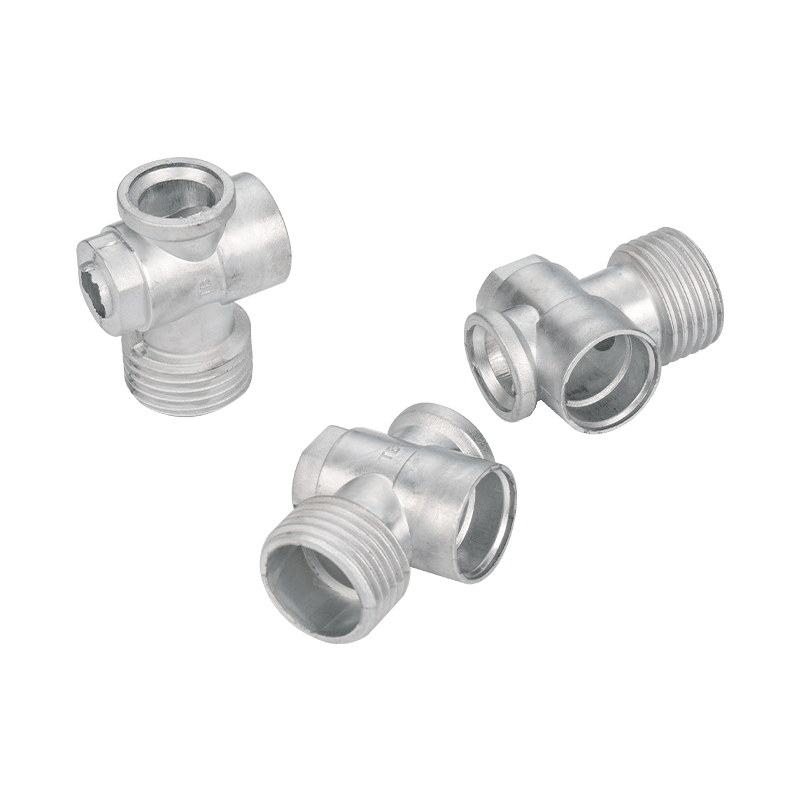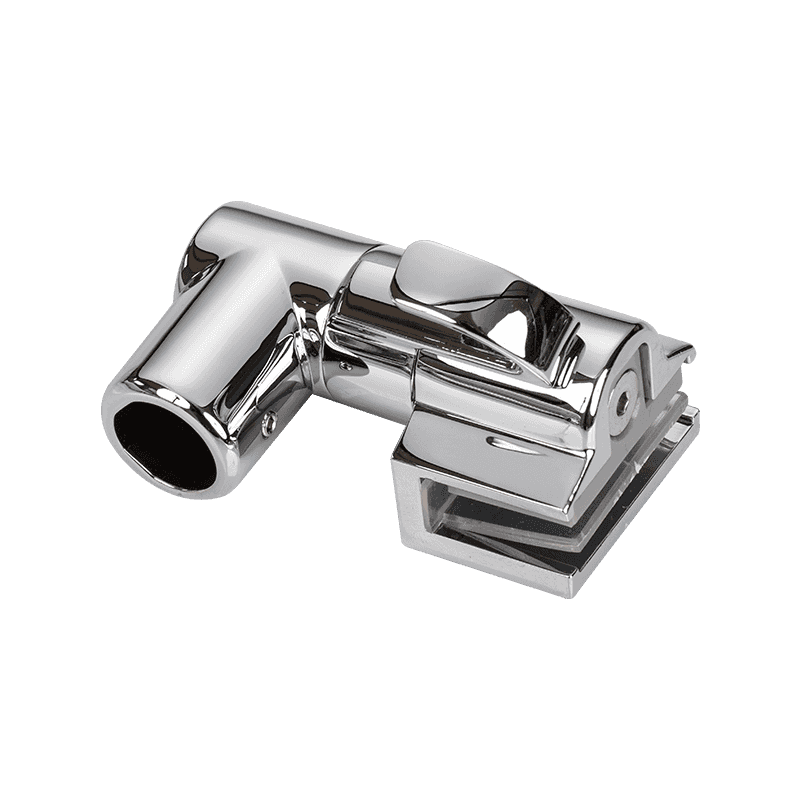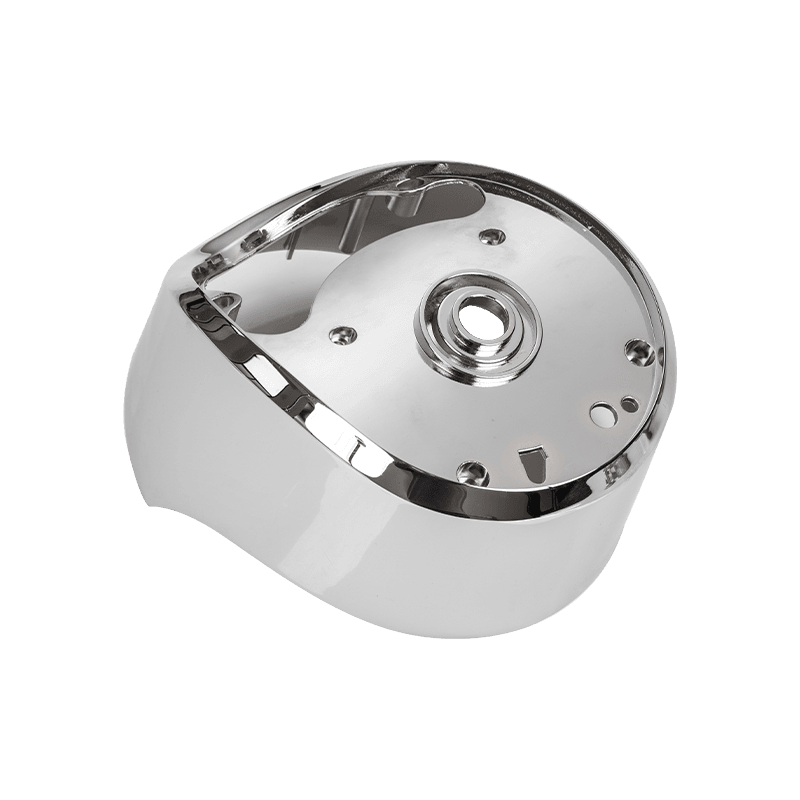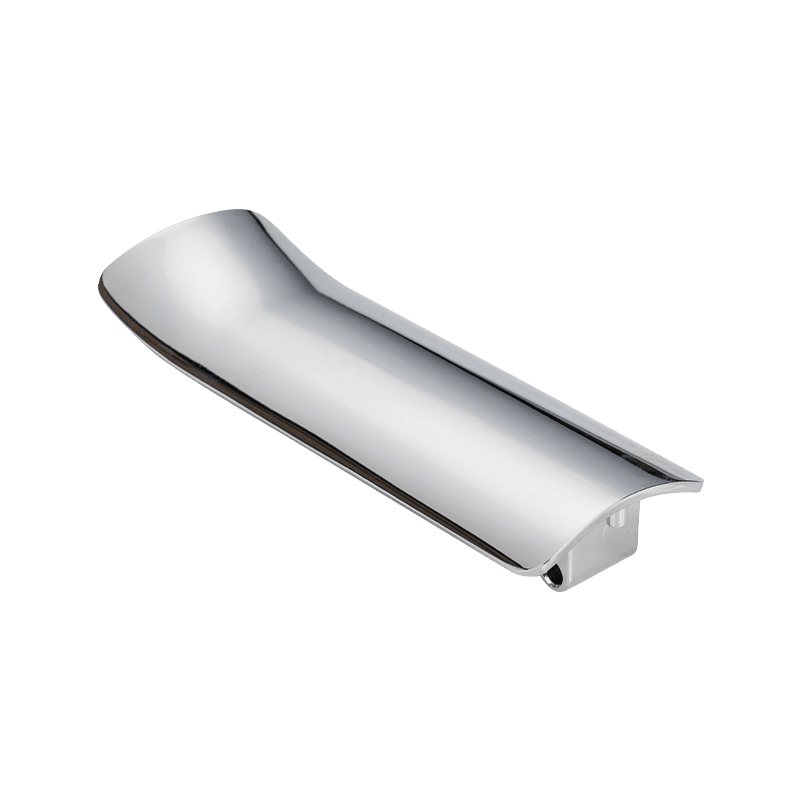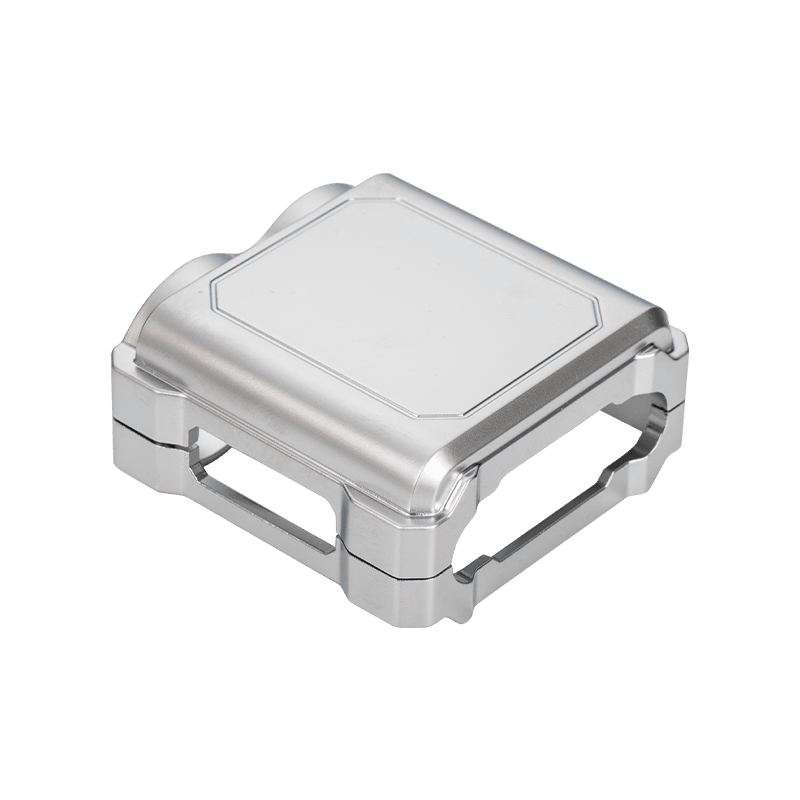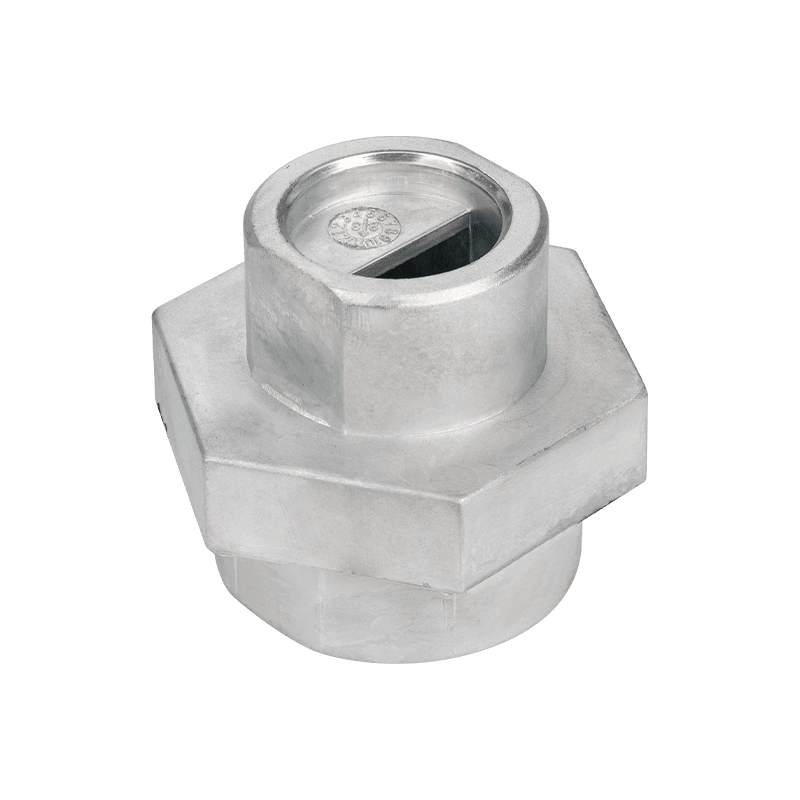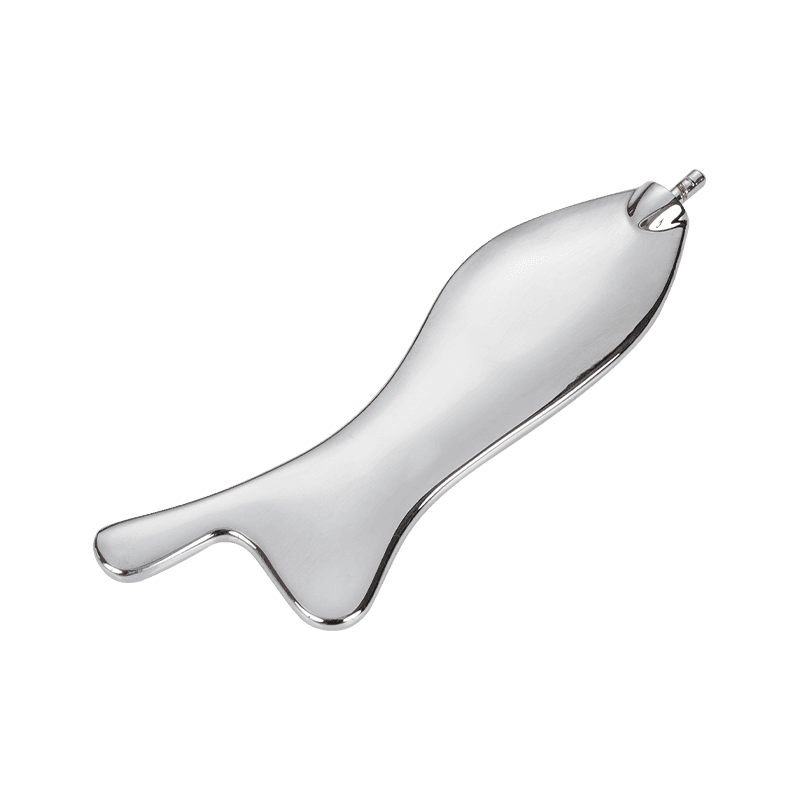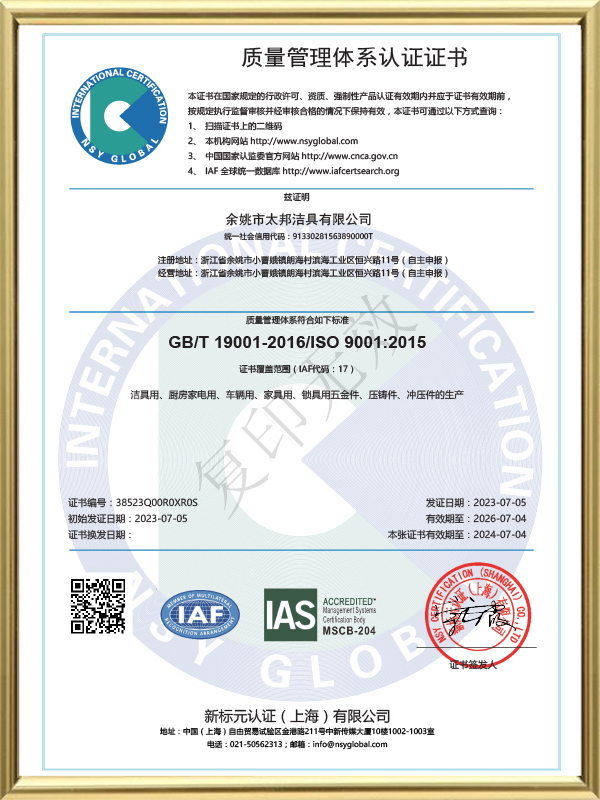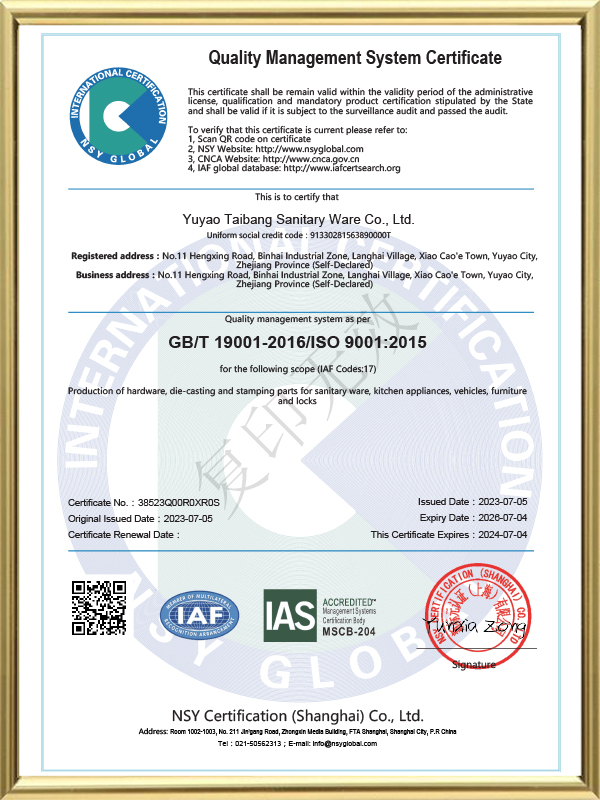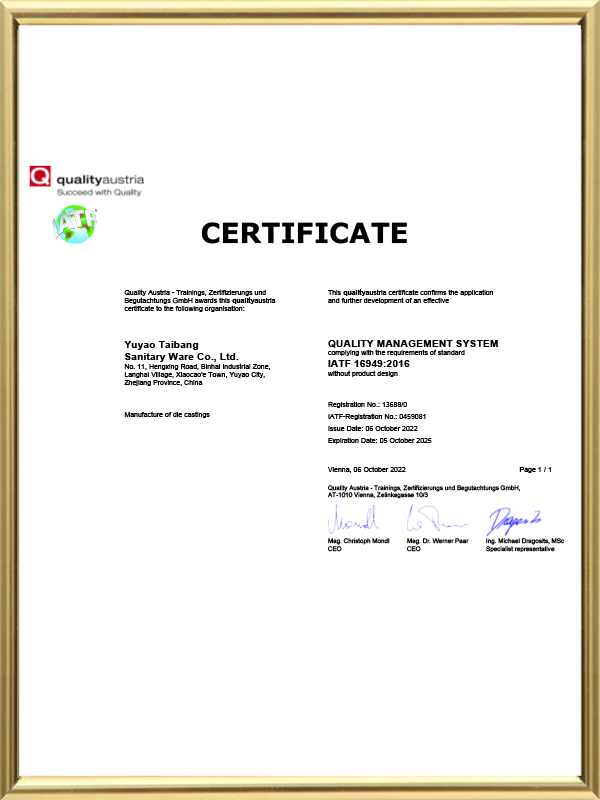Material Composition of Aluminium Profile Heat Dissipation Fittings Aluminium profile heat dissipation fittings are typically made from high-quality a...
Read MoreHome / Product

| 1. Drawings or Samples | We get the drawings or samples from customers. |
| 2. Drawings Confirmation | We will draw the 3D drawings according to the customers' 2D drawings or samples, and send the 3D drawings to customers for confirmation. |
| 3. Quotation | We will quote after getting the customers' confirmation, or quote directly according to customers' 3D drawings. |
| 4. Making Moulds/Patterns | We will make molds or pattens after getting the mold orders from the customers. |
| 5. Making Samples | We will make real samples using the molds and send them to customers for confirmation. |
| 6. Mass Producing | We will produce the products after getting the customers' confirmation and orders. |
| 7. Inspection | We will inspect the products by our inspectors or ask the customers to inspect together with us when finished. |
| 8. Shipment | We will ship the goods to the customers after getting the inspection result and the customers' confirmation. |
| Process: | 1) Die Casting / Profile Extrusion |
| 2) Machining: CNC turning, Milling, Drilling, Grinding, Reaming and Threading | |
| 3) Surface Treating | |
| 4) Inspection and Packaging | |
| Material Available: | 1) Aluminum Alloys Die Casting: ADDC10, ADC12, A360, A380, ZL110, ZL101, etc. |
| 2) Aluminum Alloys Profile Extrusion: 6061, 6063 | |
| 3) Zine Alloys Die Casting: ZDC1, ZD2, ZAMAK 3, ZAMAK 5, ZA8, ZL4-1, etc. | |
| Surface Treatment: | Polishing |
| Shot Blasting | |
| Sandblasting | |
| Powder Coating | |
| Anodizing | |
| Chrome Plating | |
| Passivation | |
| E-coating | |
| T-coating | |
| etc. | |
| Tolerance: | +/-0.01mm |
| Weight Per Unit: | 0.01-5KG |
| Order Lead Time: | 20-45 Days (According to the Quantity and Complexity of the Product 1 |
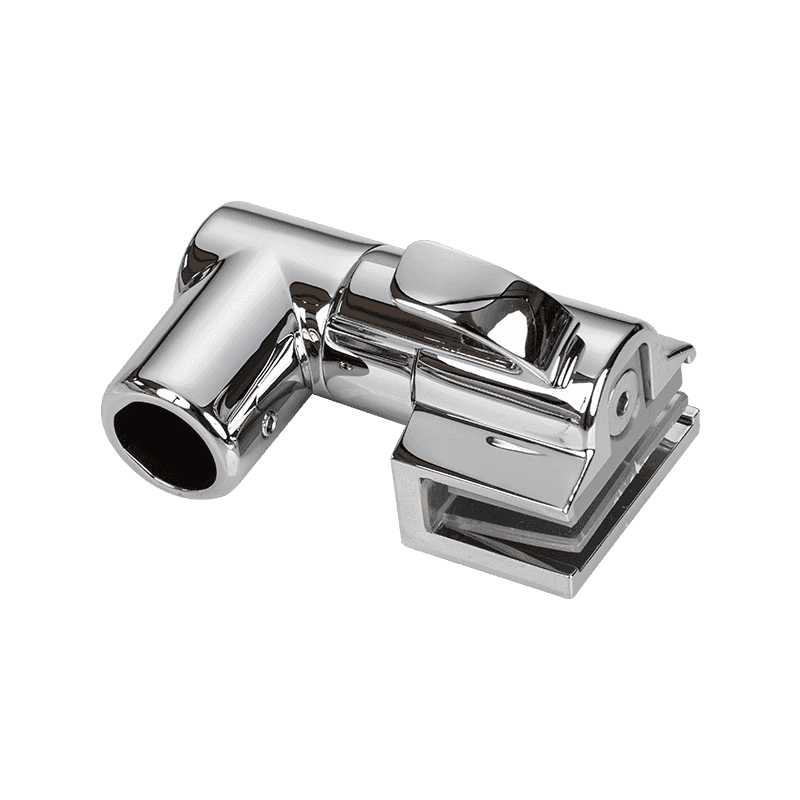
| 1. Drawings or Samples | We get the drawings or samples from customers. |
| 2. Drawings Confirmation | We will draw the 3D drawings according to the customers' 2D drawings or samples, and send the 3D drawings to customers for confirmation. |
| 3. Quotation | We will quote after getting the customers' confirmation, or quote directly according to customers' 3D drawings. |
| 4. Making Moulds/Patterns | We will make molds or pattens after getting the mold orders from the customers. |
| 5. Making Samples | We will make real samples using the molds and send them to customers for confirmation. |
| 6. Mass Producing | We will produce the products after getting the customers' confirmation and orders. |
| 7. Inspection | We will inspect the products by our inspectors or ask the customers to inspect together with us when finished. |
| 8. Shipment | We will ship the goods to the customers after getting the inspection result and the customers' confirmation. |
| Process: | 1) Die Casting / Profile Extrusion |
| 2) Machining: CNC turning, Milling, Drilling, Grinding, Reaming and Threading | |
| 3) Surface Treating | |
| 4) Inspection and Packaging | |
| Material Available: | 1) Aluminum Alloys Die Casting: ADDC10, ADC12, A360, A380, ZL110, ZL101, etc. |
| 2) Aluminum Alloys Profile Extrusion: 6061, 6063 | |
| 3) Zine Alloys Die Casting: ZDC1, ZD2, ZAMAK 3, ZAMAK 5, ZA8, ZL4-1, etc. | |
| Surface Treatment: | Polishing |
| Shot Blasting | |
| Sandblasting | |
| Powder Coating | |
| Anodizing | |
| Chrome Plating | |
| Passivation | |
| E-coating | |
| T-coating | |
| etc. | |
| Tolerance: | +/-0.01mm |
| Weight Per Unit: | 0.01-5KG |
| Order Lead Time: | 20-45 Days (According to the Quantity and Complexity of the Product 1 |
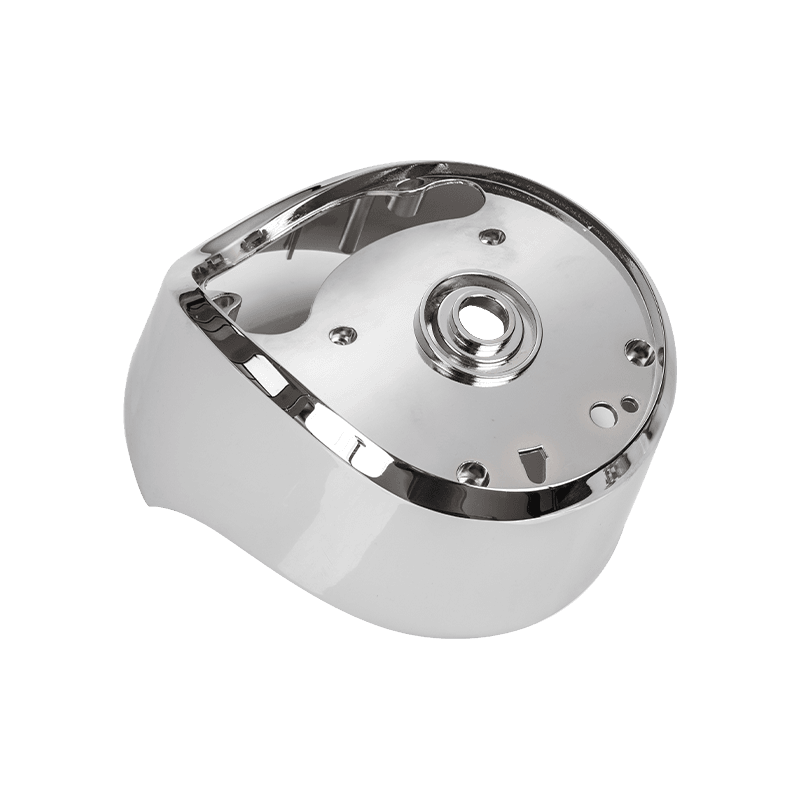
| 1. Drawings or Samples | We get the drawings or samples from customers. |
| 2. Drawings Confirmation | We will draw the 3D drawings according to the customers' 2D drawings or samples, and send the 3D drawings to customers for confirmation. |
| 3. Quotation | We will quote after getting the customers' confirmation, or quote directly according to customers' 3D drawings. |
| 4. Making Moulds/Patterns | We will make molds or pattens after getting the mold orders from the customers. |
| 5. Making Samples | We will make real samples using the molds and send them to customers for confirmation. |
| 6. Mass Producing | We will produce the products after getting the customers' confirmation and orders. |
| 7. Inspection | We will inspect the products by our inspectors or ask the customers to inspect together with us when finished. |
| 8. Shipment | We will ship the goods to the customers after getting the inspection result and the customers' confirmation. |
| Process: | 1) Die Casting / Profile Extrusion |
| 2) Machining: CNC turning, Milling, Drilling, Grinding, Reaming and Threading | |
| 3) Surface Treating | |
| 4) Inspection and Packaging | |
| Material Available: | 1) Aluminum Alloys Die Casting: ADDC10, ADC12, A360, A380, ZL110, ZL101, etc. |
| 2) Aluminum Alloys Profile Extrusion: 6061, 6063 | |
| 3) Zine Alloys Die Casting: ZDC1, ZD2, ZAMAK 3, ZAMAK 5, ZA8, ZL4-1, etc. | |
| Surface Treatment: | Polishing |
| Shot Blasting | |
| Sandblasting | |
| Powder Coating | |
| Anodizing | |
| Chrome Plating | |
| Passivation | |
| E-coating | |
| T-coating | |
| etc. | |
| Tolerance: | +/-0.01mm |
| Weight Per Unit: | 0.01-5KG |
| Order Lead Time: | 20-45 Days (According to the Quantity and Complexity of the Product 1 |
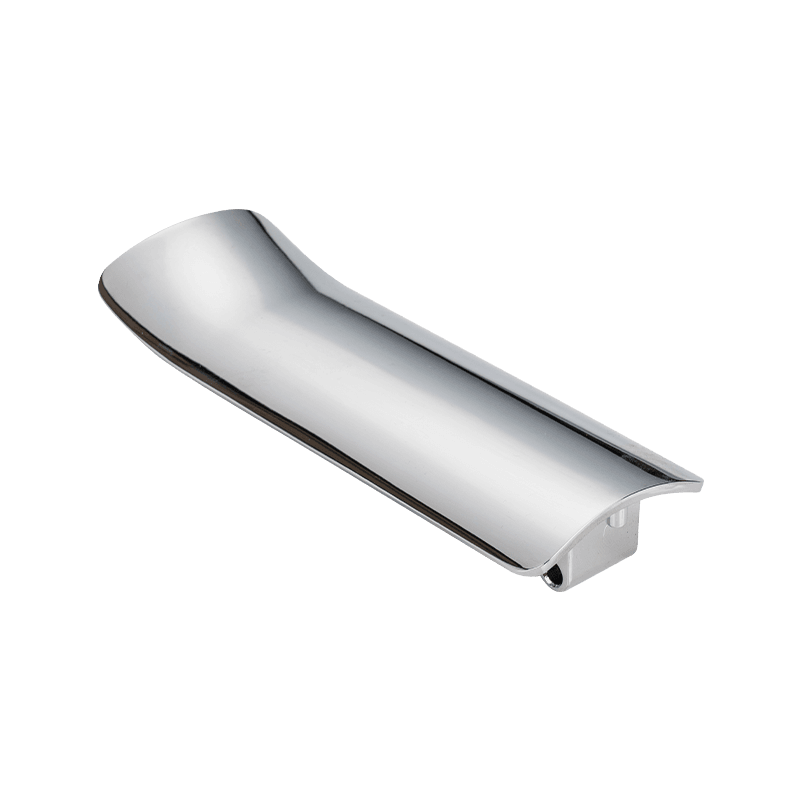
| 1. Drawings or Samples | We get the drawings or samples from customers. |
| 2. Drawings Confirmation | We will draw the 3D drawings according to the customers' 2D drawings or samples, and send the 3D drawings to customers for confirmation. |
| 3. Quotation | We will quote after getting the customers' confirmation, or quote directly according to customers' 3D drawings. |
| 4. Making Moulds/Patterns | We will make molds or pattens after getting the mold orders from the customers. |
| 5. Making Samples | We will make real samples using the molds and send them to customers for confirmation. |
| 6. Mass Producing | We will produce the products after getting the customers' confirmation and orders. |
| 7. Inspection | We will inspect the products by our inspectors or ask the customers to inspect together with us when finished. |
| 8. Shipment | We will ship the goods to the customers after getting the inspection result and the customers' confirmation. |
| Process: | 1) Die Casting / Profile Extrusion |
| 2) Machining: CNC turning, Milling, Drilling, Grinding, Reaming and Threading | |
| 3) Surface Treating | |
| 4) Inspection and Packaging | |
| Material Available: | 1) Aluminum Alloys Die Casting: ADDC10, ADC12, A360, A380, ZL110, ZL101, etc. |
| 2) Aluminum Alloys Profile Extrusion: 6061, 6063 | |
| 3) Zine Alloys Die Casting: ZDC1, ZD2, ZAMAK 3, ZAMAK 5, ZA8, ZL4-1, etc. | |
| Surface Treatment: | Polishing |
| Shot Blasting | |
| Sandblasting | |
| Powder Coating | |
| Anodizing | |
| Chrome Plating | |
| Passivation | |
| E-coating | |
| T-coating | |
| etc. | |
| Tolerance: | +/-0.01mm |
| Weight Per Unit: | 0.01-5KG |
| Order Lead Time: | 20-45 Days (According to the Quantity and Complexity of the Product 1 |
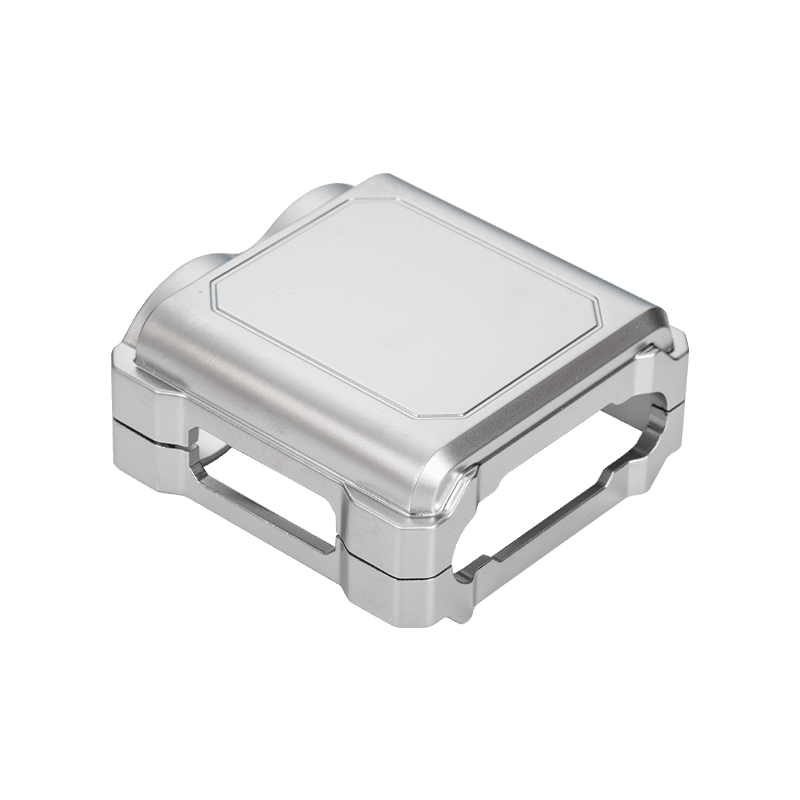
| 1. Drawings or Samples | We get the drawings or samples from customers. |
| 2. Drawings Confirmation | We will draw the 3D drawings according to the customers' 2D drawings or samples, and send the 3D drawings to customers for confirmation. |
| 3. Quotation | We will quote after getting the customers' confirmation, or quote directly according to customers' 3D drawings. |
| 4. Making Moulds/Patterns | We will make molds or pattens after getting the mold orders from the customers. |
| 5. Making Samples | We will make real samples using the molds and send them to customers for confirmation. |
| 6. Mass Producing | We will produce the products after getting the customers' confirmation and orders. |
| 7. Inspection | We will inspect the products by our inspectors or ask the customers to inspect together with us when finished. |
| 8. Shipment | We will ship the goods to the customers after getting the inspection result and the customers' confirmation. |
| Process: | 1) Die Casting / Profile Extrusion |
| 2) Machining: CNC turning, Milling, Drilling, Grinding, Reaming and Threading | |
| 3) Surface Treating | |
| 4) Inspection and Packaging | |
| Material Available: | 1) Aluminum Alloys Die Casting: ADDC10, ADC12, A360, A380, ZL110, ZL101, etc. |
| 2) Aluminum Alloys Profile Extrusion: 6061, 6063 | |
| 3) Zine Alloys Die Casting: ZDC1, ZD2, ZAMAK 3, ZAMAK 5, ZA8, ZL4-1, etc. | |
| Surface Treatment: | Polishing |
| Shot Blasting | |
| Sandblasting | |
| Powder Coating | |
| Anodizing | |
| Chrome Plating | |
| Passivation | |
| E-coating | |
| T-coating | |
| etc. | |
| Tolerance: | +/-0.01mm |
| Weight Per Unit: | 0.01-5KG |
| Order Lead Time: | 20-45 Days (According to the Quantity and Complexity of the Product 1 |
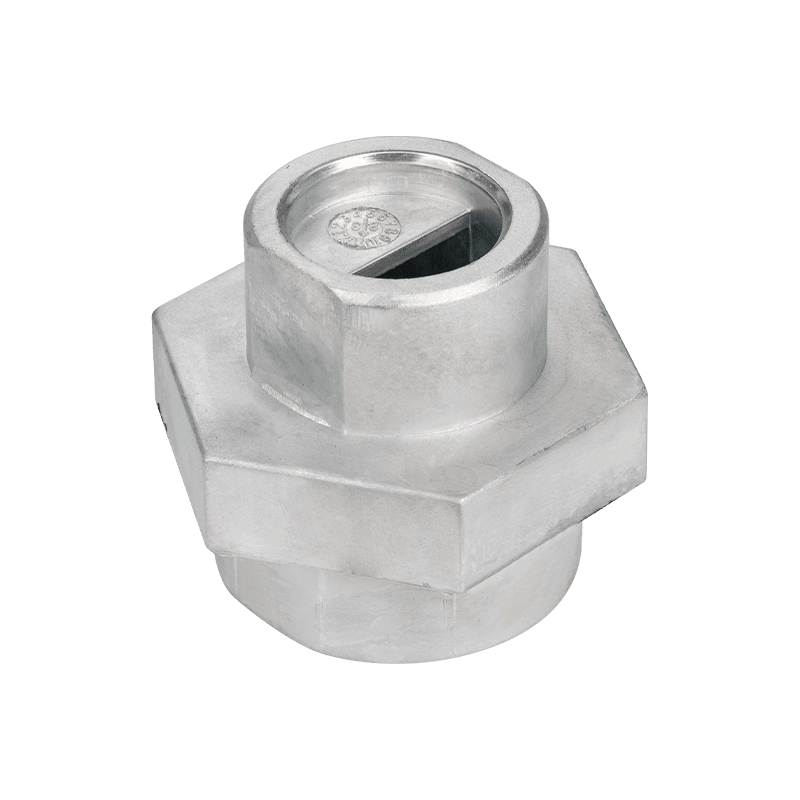
| 1. Drawings or Samples | We get the drawings or samples from customers. |
| 2. Drawings Confirmation | We will draw the 3D drawings according to the customers' 2D drawings or samples, and send the 3D drawings to customers for confirmation. |
| 3. Quotation | We will quote after getting the customers' confirmation, or quote directly according to customers' 3D drawings. |
| 4. Making Moulds/Patterns | We will make molds or pattens after getting the mold orders from the customers. |
| 5. Making Samples | We will make real samples using the molds and send them to customers for confirmation. |
| 6. Mass Producing | We will produce the products after getting the customers' confirmation and orders. |
| 7. Inspection | We will inspect the products by our inspectors or ask the customers to inspect together with us when finished. |
| 8. Shipment | We will ship the goods to the customers after getting the inspection result and the customers' confirmation. |
| Process: | 1) Die Casting / Profile Extrusion |
| 2) Machining: CNC turning, Milling, Drilling, Grinding, Reaming and Threading | |
| 3) Surface Treating | |
| 4) Inspection and Packaging | |
| Material Available: | 1) Aluminum Alloys Die Casting: ADDC10, ADC12, A360, A380, ZL110, ZL101, etc. |
| 2) Aluminum Alloys Profile Extrusion: 6061, 6063 | |
| 3) Zine Alloys Die Casting: ZDC1, ZD2, ZAMAK 3, ZAMAK 5, ZA8, ZL4-1, etc. | |
| Surface Treatment: | Polishing |
| Shot Blasting | |
| Sandblasting | |
| Powder Coating | |
| Anodizing | |
| Chrome Plating | |
| Passivation | |
| E-coating | |
| T-coating | |
| etc. | |
| Tolerance: | +/-0.01mm |
| Weight Per Unit: | 0.01-5KG |
| Order Lead Time: | 20-45 Days (According to the Quantity and Complexity of the Product 1 |
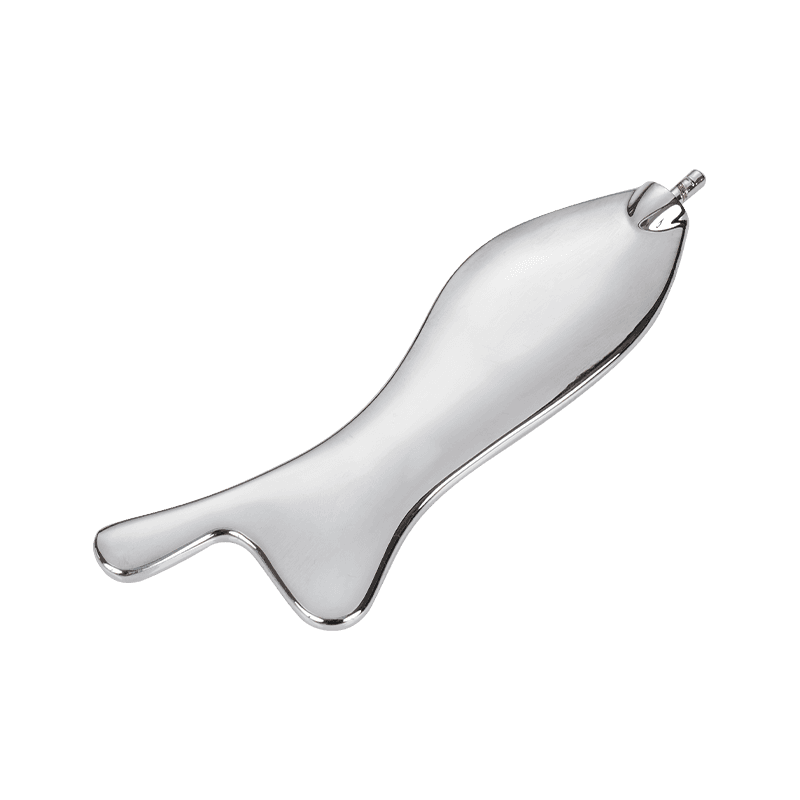
| 1. Drawings or Samples | We get the drawings or samples from customers. |
| 2. Drawings Confirmation | We will draw the 3D drawings according to the customers' 2D drawings or samples, and send the 3D drawings to customers for confirmation. |
| 3. Quotation | We will quote after getting the customers' confirmation, or quote directly according to customers' 3D drawings. |
| 4. Making Moulds/Patterns | We will make molds or pattens after getting the mold orders from the customers. |
| 5. Making Samples | We will make real samples using the molds and send them to customers for confirmation. |
| 6. Mass Producing | We will produce the products after getting the customers' confirmation and orders. |
| 7. Inspection | We will inspect the products by our inspectors or ask the customers to inspect together with us when finished. |
| 8. Shipment | We will ship the goods to the customers after getting the inspection result and the customers' confirmation. |
| Process: | 1) Die Casting / Profile Extrusion |
| 2) Machining: CNC turning, Milling, Drilling, Grinding, Reaming and Threading | |
| 3) Surface Treating | |
| 4) Inspection and Packaging | |
| Material Available: | 1) Aluminum Alloys Die Casting: ADDC10, ADC12, A360, A380, ZL110, ZL101, etc. |
| 2) Aluminum Alloys Profile Extrusion: 6061, 6063 | |
| 3) Zine Alloys Die Casting: ZDC1, ZD2, ZAMAK 3, ZAMAK 5, ZA8, ZL4-1, etc. | |
| Surface Treatment: | Polishing |
| Shot Blasting | |
| Sandblasting | |
| Powder Coating | |
| Anodizing | |
| Chrome Plating | |
| Passivation | |
| E-coating | |
| T-coating | |
| etc. | |
| Tolerance: | +/-0.01mm |
| Weight Per Unit: | 0.01-5KG |
| Order Lead Time: | 20-45 Days (According to the Quantity and Complexity of the Product 1 |
About Us
Ningbo Yao Yuan Precision Technology Co., Ltd.
Ningbo Yao Yuan Precision Technology Co., Ltd. is China Die Casting Parts Manufacturers and Custom Die Casting Parts Factory. Yao Yuan is a ′Step by Step′ for die castings. The factory is in the unique position of being able to provide the customer with design and manufacture of tooling, die casting the component, machine finishing, surface treatment and delivering the product. Yao Yuan was founded in 1994, for 30 years, it has provided unique solutions to its Tier One and OEM customers. Yao Yuan is located at Yuyao city, Ningbo, Zhejiang, China, which is North to Shanghai (the financial center of China), 180 Kilometers, and East to Ningbo Beilun Port (the biggest port in China), 60 Kilometer. The factory covers an area of 13000 square meters . In addition, there are more than 60 employees, including more than 6 technicians. Through aggressive research and development of new products, Yao Yuan have grown into manufacturer of die casting products fields in Asia with an annual output of over One thousand Tons of Products. Our products have distributed throughout China and exported to more than 20 foreign countries all over the world. Sincerely welcome friends from all over the world to negotiate cooperation with our company. Our service and quality will definitely satisfy you .
News
-
-
Material Characteristics Related to Load-Bearing Stability The structural stability of zinc alloy die-cast auto parts under high load conditions is cl...
Read More -
The Role of Lightweight Considerations in Zinc Alloy Die-Cast Auto Parts Lightweight design has become an important direction in the development of au...
Read More -
Importance of Cooling and Exhaust Systems in Lead Die Casting Cooling and exhaust systems in lead die casting play key roles in stabilizing the castin...
Read More
Product Industry knowledge
Design Considerations for Die Casting Parts
Designing die casting parts involves a thorough understanding of both the capabilities and limitations of the die casting process. Proper design is crucial for ensuring the manufacturability, performance, and cost-effectiveness of the final product.
a)Wall Thickness: One of the fundamental aspects of die casting design is maintaining uniform wall thickness. Consistent wall thickness helps in avoiding common defects such as: Porosity: Uneven cooling rates can lead to air pockets within the part. Warpage: Differential cooling and contraction can cause parts to warp or distort. Incomplete Fill: Thin sections might solidify too quickly, preventing complete filling of the mold. Uniform wall thickness ensures that the metal flows smoothly throughout the mold, enhancing the structural integrity and appearance of the final product. Recommended wall thickness ranges from 0.5 mm to 5 mm, depending on the material and application.
b)Draft Angles: Draft angles are slight tapers incorporated into the vertical surfaces of the die-cast part. They facilitate the easy removal of the part from the die without damaging the surfaces. Key points to consider include: Standard Draft Angles: For aluminum, a draft angle of about 1° to 2° is standard, whereas zinc requires about 0.75°. Complex Geometries: More complex shapes may need larger draft angles to ensure smooth ejection. Core and Cavity: Both core and cavity sides of the mold must be considered when determining appropriate draft angles. Incorporating adequate draft angles reduces the risk of damaging the part during ejection and extends the life of the die.
c)Fillets and Radii: Sharp corners and edges can be problematic in die casting. Adding fillets (rounded corners) and radii (curved edges) provides several benefits: Stress Reduction: Smooth transitions help distribute stress more evenly, preventing crack initiation and propagation. Improved Flow: Rounded edges enhance the flow of molten metal, reducing turbulence and the likelihood of defects. Tooling Longevity: Fillets reduce the wear and tear on the die, prolonging its lifespan. The typical fillet radius ranges from 0.5 mm to 1.5 mm, depending on the part size and complexity.
d)Ribs and Bosses: Ribs and bosses are structural features that enhance the strength and rigidity of die-cast parts without significantly increasing weight. Ribs: These are thin walls that connect different sections of the part, providing additional support. They should have a height-to-thickness ratio of about 3:1 to 5:1 to prevent issues like shrinkage and porosity. Bosses: Often used for mounting or assembly purposes, bosses should have uniform wall thickness around their circumference to avoid stress concentrations. Properly designed ribs and bosses contribute to the overall strength and functionality of the part while maintaining material efficiency.
e)Undercuts: Undercuts are features that prevent the part from being ejected from the die. These should be minimized or avoided where possible. If undercuts are necessary, solutions include: Side Cores: Movable components within the die that create the undercut features and retract before the part is ejected. Slides: Parts of the die that slide into place to form the undercut and then move aside for part ejection. Incorporating undercuts adds complexity and cost to the die, so careful consideration is needed during the design phase.
Advantages of Die Casting Parts
Die casting is a popular manufacturing process due to its numerous advantages, making it ideal for producing high-quality metal parts across various industries.
a)High Precision: Die casting is renowned for its ability to produce parts with high precision and tight tolerances. The process involves injecting molten metal into a mold under high pressure, which allows for excellent detail and surface finish. Key points include: Tight Tolerances: Die casting can achieve tolerances as tight as ±0.1 mm, making it suitable for applications requiring precise dimensions. Smooth Surface Finish: The as-cast surface finish typically ranges from 1-2 µm Ra, which often eliminates the need for additional machining or polishing. Repeatability: The consistency of the die casting process ensures that each part produced is virtually identical to the previous one, which is critical for high-volume production. The high precision of die casting parts reduces the need for secondary operations, saving time and costs while ensuring parts meet exact specifications.
b)Complex Geometries: Die casting excels at producing parts with complex geometries and intricate details that would be challenging or impossible to achieve with other manufacturing methods. Advantages include: Intricate Shapes: The high-pressure injection process allows for the creation of complex shapes, including thin walls, sharp corners, and detailed textures. Integrated Features: Parts can be designed with integrated features such as threads, bosses, and holes, reducing the need for additional assembly or machining. Design Flexibility: Die casting offers great design flexibility, allowing engineers to optimize parts for performance and weight without compromising on manufacturability. This capability to produce complex geometries in a single process step reduces assembly time and improves overall part performance.
c)Strength and Durability: Die casting parts are known for their strength and durability, making them suitable for demanding applications. Key factors include: Material Properties: Die-cast metals like aluminum, zinc, and magnesium offer excellent mechanical properties, including high tensile strength, impact resistance, and wear resistance. Rapid Cooling: The rapid cooling and solidification process inherent in die casting results in a fine-grained microstructure, enhancing the strength and durability of the parts. Consistency: The controlled nature of the die casting process ensures consistent mechanical properties throughout each part, which is crucial for reliability in critical applications. The inherent strength and durability of die-cast parts make them ideal for use in the automotive and industrial sectors, where high performance and longevity are essential.
Are You Interested In Our Products
Leave your name and email address to get our prices and details immediately.

 English
English 中文简体
中文简体 Deutsch
Deutsch русский
русский

